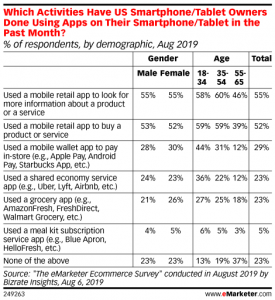Your content may be terrific, but if you lack a smart outreach plan, you’re going to fall short, says contributor Jeremy Knauff. Here are several tactics and email templates you can use to execute a thoughtful link-building outreach campaign.

In my last article, I outlined several tactics for building links in challenging industries. I focused on different ways to create link-worthy content, but as we all know, that’s only half of the equation. The other half is planning a thoughtful link-building outreach campaign, because no matter how awesome your content may be, no one will link to it if they don’t know it exists.
In this article, I’m going to talk about link-building outreach, an equally important aspect of link building at a tactical level.
I’m also going to continue using the hypothetical dumpster rental company I used in the last article as my example industry. While this article uses a particular industry and targets general contractors in the examples, the concepts I share can be applied to any industry.
Create a plan
It’s easy to get excited and dive into a link-building campaign like a kid at the pool on the first day of summer. But if you do, you will probably fail, since jumping in without a plan does little for you.
If you’ve read Tim Ferris’s book “The 4-Hour Work Week,” then you should already be familiar with the concept of batching. If you haven’t read it, batching is basically just performing a particular type of task, such as compiling data or sending emails, in larger blocks of time rather than jumping back and forth between various types of tasks.
Batching is a proven way to increase productivity because in general, humans are no good at multitasking.
Before you get started, you’ll need to decide:
- What type of link-building prospects you want to approach.
- What you want them to link to.
- Why they should link to your content.
Then you’ll need to compile all of the necessary data, set up your systems for outreach and tracking, and then begin engaging with your prospects.
Build your list
Your first step is to decide on the type of link-building prospects you want to target. There are a few ways we can go about compiling the data we need:
- You can compile a list from one or more Google searches.
- If you’re involved in networking and/or trade organizations, you will have access to a member directory, or perhaps even a comma-separated values (CSV) file of the member list.
- You can utilize a tool to create a list based on a specific set of criteria.
I recommend a combination of all of these methods. That will give you a larger, more diverse pool of websites from which to potentially earn links.
When it comes to building your prospect list, you should place a higher priority on the links that may be easier for you but more difficult for competitors to earn. One example of this might be links from the websites of networking and trade organizations you belong to but your competitors don’t.
Organize and track
There are a lot of ways to organize and track your efforts, so you’ll have to figure out what works best for your workflow. This may require some trial and error.
At Spartan Media (my company) we compile our list of link-building prospects in Google Sheets. Since we’re using G Suite Business, we create the document in a team folder. This means that the folder, rather than an individual, owns the document so we don’t have to worry about who it’s shared with. Anyone who has access to the folder will be able to see and edit the document, which eliminates a lot of administrative headaches — especially if you have larger teams working on your link-building efforts.
This spreadsheet contains all of the applicable contact information and any domain metrics that we feel are relevant to the campaign, as well as dates and some details on our communications with the owner or administrator of that website.
We also utilize HubSpot as our customer relationship management (CRM), which tracks all of our outbound emails and enables us to tag link-building prospects and relationships so we can continue working together over time. This relationship tool helps build links more quickly because we can simply perform a quick search in HubSpot to find contacts who have linked to pages for us in the past and reach out to them again.
Gmail integrates with HubSpot to facilitate tracking, and we also add a paid plugin called Boomerang for Gmail to help make sure nothing falls through the cracks. This enables us to create a reminder in the event that we don’t receive a response within a particular time frame. Boomerang is a great feature. Here’s a very quick look at the tool:
It’s important to note that it’s easy to go too far when it comes to following up. I generally won’t send more than two or three emails if I haven’t received a response because it’s pretty clear that they aren’t interested. Continuing to email at this point will only annoy potential link-building prospects.
Connect and engage
You’ve probably seen some pretty bad examples of link-building outreach emails, and if we’re being honest, you’ve probably even sent a few. I know I have. But it’s critical to get the outreach right, because if you don’t, all of your efforts will be wasted.
In some cases, you can get results from a cold email and ask potential link-building prospects for a link, but you will get even better results when you get their attention by first doing something of value for them.
Building high-quality links that create sustainable organic ranking often requires more than brute force; it requires real engagement with other humans. This might be as simple as sharing one or more of their posts on the social networks or something a little more involved, like introducing them to a mutually beneficial contact.
Each message will need to be tailored to the individual link prospect in order to be effective, and you should identify certain demographic groups for which a certain type of message works well.
Here are a few types of messages that would work well under different conditions.
Approach fellow members of an organization. This tactic works particularly well if you’re in a network or trade organization together because there is generally a common bond and implied trust. From there, it’s a relatively simple matter of explaining how your content solves a problem their customers have in a way that also benefits the contractor. An email in this area might look like this:
Subject: Favor for fellow [trade organization] member?
Hi [Name],
You and I are in the [name of trade organization] together, and when I asked Tom Smith for a few of the best contractors in the group, your name was one that he gave me.
Since a lot of our customers rent our dumpsters for home construction projects, I’ve published an article about choosing the right contractor.
[URL]
I was hoping that you would add a link to it from your website so more people can find it. My goal is that it will help educate people so that they can tell the difference between contractors like you and all the other guys.
Use this tactic with care, because these link prospects are people who know each other and who you’ll likely run into at meetings and events for the organization you’re both a part of. If you come on too strong, you could hurt your chance of earning links from other members of the organization down the road.
Bestow expert/authority status. This can be an effective approach even if you’ve never engaged with the link prospect before because it caters to their ego. After all, who doesn’t want to be cited as an expert in their field?
Subject: Can I get your input?
Hi [Name],
I’ve heard about your experience and the quality of your work, so I’d like to include a quote from you in an article I’ve published about choosing the right contractor.
When you have a minute, take a look at the article here [URL] and send me a quote to include. It doesn’t need to be elaborate, a few sentences should be fine.
Once you’ve included their quote, they might link to the article on their own to showcase the fact that they are a sought-after expert. If not, it’s simple enough to ask them to do so.
While it may be tempting to remove quotes from people who are unwilling to link to your website, doing so will only ensure that they never will. They may also mention the situation with peers, making it more difficult for you to get other contractors to link to your website in the future.
Because of this, you need to carefully choose the contractors you want to quote based not only on obvious criteria, like their authority and knowledge but also on the likelihood of their linking to your website.
For example, a website that hasn’t been updated in years or doesn’t link to any external websites would typically be a bad prospect, while one that is updated frequently and often links to other external websites would typically be a good one.
Provide a killer resource. People will generally only link to things that provide value to them, their audience and/or customers. A powerful way to do this is to create a comprehensive resource that is not only useful for their customers but also helps contractors to earn new business.
Subject: Did I leave anything out?
Hi [Name],
Would you mind sharing your insight on something?
I’ve created this article to help people to decide whether to take a DIY approach or hire a contractor. I think you and I both know that most people are better off hiring a licensed contractor, so I tried to outline all of the things that go into a home remodeling project so they can see how difficult, time-consuming and complicated it really is.
Can you tell me if I’ve left anything out?
[URL]
P.S. If you think this is a good resource that will help steer people away from making the mistake of taking the DIY approach, I’d love for you to place a link to it from your website. That will help more people see it and hopefully drive some customers your way.
As the outreach email implies, this resource should honestly and ethically steer visitors (homeowners) away from the do-it-yourself (DIY) approach by demonstrating just how difficult, time-consuming and complicated particular projects are. The more convincing this is, the more likely contractors will be to link to it.
Make it better
It’s important to point out that when I say “create a killer resource,” I mean “make it exponentially better than anything else” online.
Don’t make it longer just for the sake of a higher word count, but make sure it becomes the Holy Grail of information on that topic, to include text content, images, video and/or audio where applicable.
Average content isn’t going to motivate anyone to link to it. Long live awesome content!
[Article on Search Engine Land.]
Opinions expressed in this article are those of the guest author and not necessarily Marketing Land. Staff authors are listed here.
Marketing Land – Internet Marketing News, Strategies & Tips
(91)





